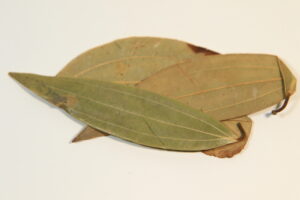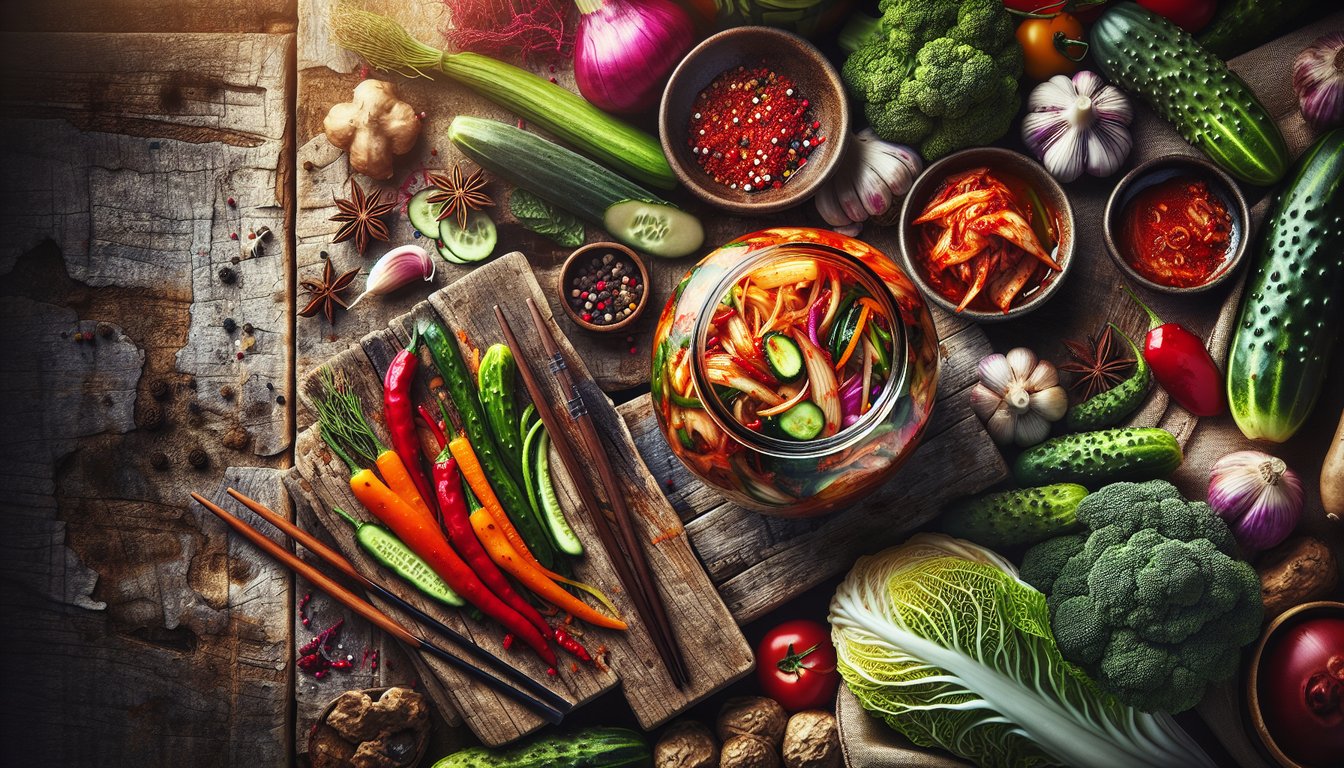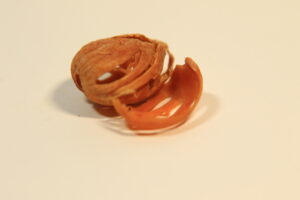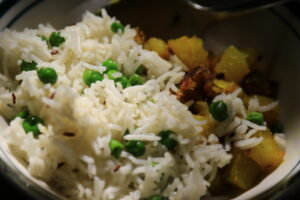Besan, also known as chickpea flour, is a culinary gem that deserves a prime spot in your pantry. Milled from dried chickpeas, this golden flour boasts a rich, earthy taste that effortlessly bridges savory and sweet dishes. Whether you’re exploring new plant-based recipes, trying to cut back on gluten, or simply aiming to enrich your meals with high-quality ingredients, besan can step in as a flavorful, protein-packed alternative to standard wheat flour. You can buy in online or from your local Indian Grocery store or even from Amazon.
Beyond offering a unique taste and texture, besan aligns beautifully with vegetarian cooking philosophies—versatile enough to tackle recipes from crunchy snacks to indulgent desserts. In this article, we’ll explore besan’s origins, its nutritional highlights, and why it’s such a popular choice in global cuisines.
Origins and Cultural Significance
Besan’s longstanding popularity traces back to South Asia and the Middle East, regions where chickpea cultivation has thrived for centuries. In Indian cuisine specifically, besan forms the foundation of many iconic dishes, such as pakoras (fried fritters) and kadhi (yogurt-based curry). It’s not limited to savory fare, though—besan also features in sweet treats like ladoos, a beloved festive dessert.
Its significance isn’t just culinary. Historically, chickpeas have been a cost-effective staple crop, rich in nutrients and accessible to a wide population. This made besan a go-to ingredient for families looking to stretch their meals while maintaining taste and nutrition. Over time, besan’s reputation for versatility and health benefits helped it travel beyond its traditional strongholds, finding enthusiastic fans in global fusion kitchens.
Nutritional Highlights
One of the main reasons besan stands out is its robust nutritional profile. According to data from the U.S. Department of Agriculture (USDA), chickpea flour contains substantial amounts of protein and dietary fiber—both crucial for a balanced vegetarian diet. Its protein content supports muscle maintenance and overall vitality, while fiber aids digestion and helps maintain steady blood sugar levels.
Moreover, besan’s naturally lower glycemic index makes it a beneficial alternative to refined wheat flours for individuals watching their carbohydrate intake. It’s also packed with essential vitamins and minerals, including iron, magnesium, and B vitamins. Because it’s gluten-free, besan can be a game-changer for anyone with gluten sensitivities or celiac disease. For more tips on balancing nutrition as a vegetarian, visit our Meal Planning Basics page.
Culinary Uses and Techniques
Binding Agent: In dishes where you need a sticky, cohesive texture—think veggie burgers or fritters—besan excels at holding ingredients together. This makes it a solid choice if you’re looking to avoid eggs or standard wheat flour.
Thickening Soups and Curries: Whisking a tablespoon or two of besan into broth is an easy way to add body to soups or curries. In Indian cuisine, besan is the star thickener in kadhi, a tangy yogurt-based curry often served over rice.
Sweet and Savory Baking: From pancakes and flatbreads to nutrient-dense brownies, besan’s unique flavor profile adds depth and a subtle nuttiness. You can even combine besan with other flours to create custom blends that suit your taste preferences.
Light Toasting for Extra Flavor: If you want to draw out besan’s aromatic qualities, try lightly toasting it in a dry pan on low heat. Once it starts turning a deeper shade of golden and you detect that nutty aroma, you’ll know it’s ready.
Incorporating Besan Into Your Routine
Keeping a bag of besan in your pantry can streamline your cooking routine. If you’re in a pinch and need a quick, protein-rich batter, besan steps up effortlessly. For those interested in exploring new snacks, try using besan in place of refined flours. Not only does it boost nutrition, but it also provides that satisfying density and structure without relying on gluten.
To maximize freshness, store your chickpea flour in an airtight container. Because of its natural fat content, besan can spoil if exposed to warmth or humidity for too long. Many cooks prefer refrigeration (or even freezing) if they don’t anticipate frequent use. If you’re eager to learn about other pantry essentials, check out our article on Veggie Pantry Staples for more ideas.
Three Recipes to Get You Started
Below are three tried-and-tested recipes showcasing besan’s versatility. Feel free to customize them to your taste or dietary needs.
1. Crispy Besan Pakoras (Snack)
- Ingredients: 1 cup besan, ½ tsp chili powder, ½ tsp salt, ¼ tsp turmeric, ~¾ cup water, sliced vegetables (onions, potatoes, spinach), oil for frying.
- Directions: Whisk the dry ingredients, then slowly add water until you get a thick batter. Dip the vegetables and fry in hot oil over medium-high heat until golden brown. Serve with chutney or ketchup.
2. Besan Ladoo with Cardamom (Dessert)
- Ingredients: 1 cup besan, 2 tbsp ghee, ½ cup powdered sugar, ¼ tsp cardamom powder, 1 tbsp chopped nuts (optional).
- Directions: Warm ghee in a pan, then add besan. Roast on low-medium heat, stirring continuously, until the flour turns light brown and aromatic (10-15 minutes). Turn off heat, stir in cardamom and let it cool slightly. Mix in powdered sugar. Shape into balls while still warm.
3. Kadhi (Savory Yogurt-Besan Curry)
- Ingredients: 1 cup yogurt, 2 tbsp besan, 2 cups water, salt, chili powder, 1 tbsp oil, ½ tsp mustard seeds, ½ tsp cumin seeds, and a pinch of asafoetida.
- Directions: Whisk yogurt, besan, water, salt, and chili powder. Heat oil in a pan, add mustard and cumin seeds, then asafoetida. When seeds sizzle, pour in the yogurt mixture. Cook on low heat for 10-15 minutes until it thickens. Serve with rice or roti.
- Added Bonus: You can add the besan pakoras to Kadhi and you get a new dish: Kadhi Pakora, that does so well with plain rotis and steamed rice.
Kimchi: A Step-by-Step Guide to creating your own!
Welcome to the colorful tapestry of Korean cuisine, where every dish is a testament to a rich cultural heritage and an array of complex. In this culinary journey, we will be exploring the time-honored tradition of making kimchi, a fermented dish revered not only for its bold taste but also for its impressive health benefits. Kimchi has been a staple in Korean diets for centuries, and now you can bring this savory, tangy, and spicy delight to your table. Let’s embark on this fermenting adventure together!
The Art of Kimchi Fermentation
Fermentation is a natural process through which microorganisms like bacteria and yeast convert carbohydrates into alcohol or acids. This not only preserves the food but also creates beneficial enzymes, b-vitamins, Omega-3 fatty acids, and various strains of probiotics. The Harvard Medical School highlights the importance of fermented foods like kimchi in contributing to gut health, an essential component of overall well-being.
Gathering Your Ingredients
Creating kimchi begins with selecting fresh, high-quality ingredients. Here’s what you’ll need:
- Napa cabbage
- Daikon radish
- Carrots
- Green onions
- Garlic
- Ginger
- Korean red pepper flakes (gochugaru)
- Fish sauce or a vegan alternative like soy sauce
- Sea salt
- Sugar (optional)
Preparing the Vegetables
Begin by cutting the Napa cabbage into quarters and removing the cores. Then, chop it to your desired size. Soak the pieces in a brine made from water and sea salt, ensuring the cabbage is fully submerged. Leave it to sit for about 2 hours, which will soften the leaves and start the fermentation process.
The Kimchi Paste
The heart of kimchi’s flavor lies in its paste. To create this essential component, you’ll blend garlic, ginger, sugar (if using), and fish sauce into a smooth paste. Then, add the Korean red pepper flakes, adjusting the quantity to suit your taste for heat. If you’re looking for a vegetarian version, Saveur’s Vegan Kimchi recipe is a great resource for substitutes.
Combining and Fermenting
Once your cabbage has finished soaking, rinse it thoroughly and let it drain. While it’s draining, cut the daikon radish, carrots, and green onions into matchstick-sized pieces. Next, mix these vegetables with the prepared kimchi paste until they are all evenly coated. Now, it’s time to massage the paste into the cabbage leaves, ensuring every leaf is covered.
After the cabbage is fully dressed with the kimchi paste and additional vegetables, pack it tightly into a clean jar, pressing down to reduce any air pockets. Leave some space at the top to allow for expansion. Seal the jar and let it sit at room temperature for 1-5 days. Check it daily, pressing down the vegetables to keep them submerged in the brine that will form. Once your kimchi is bubbling and tastes tangy, it’s ready to be refrigerated. The New York Times explores the global love affair with kimchi and its adoption in Western cuisine.
Enjoying Your Kimchi
Kimchi can be enjoyed in countless ways – as a side dish, in stews, on sandwiches, or even as a topping on your favorite pizza. The versatility of kimchi is one of its many appealing qualities, and experimenting with it in your cooking can bring a delightful Korean twist to your meals. Remember, the longer kimchi ferments, the more intense its flavors become. Enjoy it at various stages to discover your preferred balance of tangy and spicy.
Mace: Warm and a potent spice
Mace is a spice that is closely related to nutmeg and is derived from the same tree. It is a red, lacy covering that surrounds the nutmeg seed and is often used as a flavoring in both sweet and savory dishes.
Mace has a long and interesting history. It was used by the ancient Egyptians for embalming and was also used in traditional Chinese medicine. In medieval Europe, it was used as a flavoring for meat dishes and was even considered a luxury item. Mace was also traded extensively by the Dutch in the 17th and 18th centuries, who controlled much of the nutmeg trade.
The flavor profile of mace is similar to that of nutmeg, but it is slightly sweeter and more delicate. It has a warm and aromatic flavor with hints of cinnamon and clove. Mace is often used in baking, particularly in sweet dishes like cakes, pies, and custards. It can also be used to flavor savory dishes like soups, stews, and curries.
In terms of appearance, mace is a reddish-orange color and has a lacy texture. It is often sold in whole pieces or in ground form, and can be found in many specialty food stores and online retailers.
Mace has a number of historical and cultural uses. In addition to its use in cooking, it has been used for its medicinal properties as well. Some traditional medicine practitioners believe that mace can help with digestive issues and can also act as a natural sedative. While there is limited scientific research on the health benefits of mace, it is known to contain a number of antioxidants and other nutrients that may be beneficial for overall health.
Here are two simple recipes that feature mace:
- Spiced Nuts
Ingredients:
- 2 cups mixed nuts (such as almonds, cashews, and walnuts)
- 2 tbsp honey
- 1 tbsp melted butter
- 1 tsp ground cinnamon
- 1/2 tsp ground mace
- 1/4 tsp ground ginger
- 1/4 tsp salt
Directions:
- Preheat oven to 350°F.
- In a large bowl, mix together honey, melted butter, cinnamon, mace, ginger, and salt.
- Add nuts to the bowl and toss until coated in the spice mixture.
- Spread nuts out on a baking sheet lined with parchment paper.
- Roast in the oven for 10-15 minutes, or until golden brown and fragrant.
- Let nuts cool completely before serving.
- Apple and Mace Sauce
2. Spiced Apple dip
Ingredients:
- 4 apples, peeled and diced
- 1/2 cup water
- 1/4 cup brown sugar
- 1 tsp ground mace
- 1/2 tsp ground cinnamon
Directions:
- In a medium saucepan, combine diced apples, water, brown sugar, mace, and cinnamon.
- Bring to a boil over medium-high heat, then reduce heat to low and let simmer for 20-25 minutes, or until apples are soft and sauce is thickened.
- Use an immersion blender or transfer mixture to a blender and blend until smooth.
- Serve warm or chilled as a topping for oatmeal, yogurt, or pancakes.
In conclusion, mace is a versatile and flavorful spice that has a long and interesting history. Its warm and aromatic flavor makes it a popular choice for both sweet and savory dishes, and its cultural and medicinal uses make it a valuable addition to any spice cabinet.
More protein on my plate!
As more and more people adopt a plant-based diet, there is a growing interest in finding ways to incorporate more plant-based protein into their meals. While many people assume that a plant-based diet lacks protein, there are actually plenty of sources of protein in the plant kingdom, from beans and legumes to nuts and seeds. In this article, we’ll explore some of the best ways to add more plant-based protein to your diet and share two easy recipes for high-protein snacks.
One of the best ways to add more plant-based protein to your diet is to incorporate beans and legumes into your meals. These are a great source of protein, as well as fiber and other important nutrients. Some good options include chickpeas, lentils, black beans, and kidney beans. You can add these to soups, stews, salads, or make them into burgers or falafel.
Another excellent source of plant-based protein is nuts and seeds. These are not only high in protein, but they also contain healthy fats and other important nutrients. Some good options include almonds, cashews, walnuts, and pumpkin seeds. You can add these to your meals as a topping for salads or oatmeal, or make them into a spread like almond butter or tahini.
Soy products are also a great source of plant-based protein. Some good options include tofu, tempeh, and edamame. These can be added to stir-fries, salads, or made into burgers or veggie meatballs.
Another great way to add more plant-based protein to your diet is to use protein powders. These can be added to smoothies or used in baking to increase the protein content of your meals. Some good options include pea protein, hemp protein, and brown rice protein.
Here are two easy recipes for high-protein snacks:
- Roasted Chickpeas
Ingredients:
- 1 can chickpeas, drained and rinsed
- 1 tbsp olive oil
- 1 tsp smoked paprika
- 1/2 tsp garlic powder
- 1/2 tsp salt
Directions:
- Preheat oven to 400°F.
- Drain and rinse chickpeas and pat them dry with a towel.
- In a bowl, mix together olive oil, smoked paprika, garlic powder, and salt.
- Add chickpeas to the bowl and toss until coated in the spice mixture.
- Spread chickpeas out on a baking sheet lined with parchment paper.
- Roast in the oven for 20-25 minutes, or until crispy.
- Serve as a snack or add to salads for extra crunch.
- Peanut Butter Energy Balls
Ingredients:
- 1 cup rolled oats
- 1/2 cup peanut butter
- 1/4 cup honey
- 1/4 cup chocolate chips
- 1/4 cup chia seeds
Directions:
- In a large bowl, mix together rolled oats, peanut butter, and honey.
- Add in chocolate chips and chia seeds and mix until combined.
- Use a cookie scoop or spoon to form mixture into small balls.
- Place balls on a baking sheet lined with parchment paper and refrigerate for 30 minutes.
- Serve as a snack or pack them in your lunch for an easy and portable protein boost.
Try out these two easy recipes for high-protein snacks and enjoy the benefits of a balanced and nutritious diet.
Adzuki Beans
I remember eating Chinese Moon cake and loving it very much. I used to wonder what’s the tasty sweet fillings and then I came across Adzuki beans..they remind me of mung beans except that they are red in color.
Adzuki beans, also known as red beans, are a type of legume that has been a staple food in East Asian countries for thousands of years. These small, reddish-brown beans have a slightly sweet and nutty flavor and are a great source of protein, fiber, and other essential nutrients. Let’s take a closer look at the history, geographical distribution, and culinary uses of Adzuki beans.
History and Geographical Distribution
Adzuki beans have been cultivated in China, Japan, and Korea for over 2000 years, and they have played an important role in the traditional diets of these countries. The beans were first introduced to Japan during the Yayoi period (300 BC – 300 AD) and have since become a popular ingredient in Japanese cuisine. Adzuki beans are also widely consumed in China and Korea, where they are used in a variety of sweet and savory dishes.
Description
Adzuki beans are small, oval-shaped beans that are usually red or brown in color. They have a sweet and nutty flavor and a slightly firm texture. Adzuki beans are packed with nutrients and are a great source of protein, fiber, iron, magnesium, and potassium.
Adzuki beans are a versatile ingredient and are used in a wide range of dishes in East Asian cuisine. Here are some of the most popular dishes featuring Adzuki beans:
- Red Bean Paste: Red bean paste, also known as anko, is a popular filling for Japanese desserts such as mochi and dorayaki. The paste is made by cooking Adzuki beans with sugar and then mashing them into a smooth paste.
- Adzuki Bean Soup: Adzuki bean soup is a popular dish in China and Korea. The soup is made by cooking Adzuki beans with water and sometimes with other ingredients such as sweet potatoes, lotus seeds, and jujubes. The soup can be sweet or savory and is often served as a dessert.
- Sweet Rice Cake: Sweet rice cake, also known as nian gao, is a Chinese dessert made from glutinous rice flour and Adzuki bean paste. The cake is steamed and then cut into slices and served.
- Adzuki Bean Porridge: Adzuki bean porridge is a simple and healthy breakfast dish that is popular in Korea. The porridge is made by cooking Adzuki beans with water or milk and then adding rice or other grains.
- Adzuki Bean Salad: Adzuki bean salad is a refreshing and nutritious dish that is often served as a side dish in Japan. The salad is made by combining Adzuki beans with vegetables such as cucumber, carrot, and radish, and then dressing the salad with sesame oil and soy sauce.
Easy Way to Cook with Adzuki Beans
Adzuki beans are a great ingredient to add to your diet, and they are easy to cook with. Here is a simple recipe for Adzuki bean soup:
Ingredients:
- 1 cup Adzuki beans
- 6 cups water
- 1 piece of ginger ( 1 inch long, peeled and shredded)
- 1/2 cup sugar
Instructions:
- Rinse the Adzuki beans and soak them in water for at least 2 hours or overnight.
- Drain the beans and put them in a pot with 6 cups of water and ginger.
- Bring the water to a boil and then reduce the heat to low and simmer for about 1 hour or until the beans are soft.
- Add the sugar and stir until it dissolves.
- Serve the soup hot or cold.
Bay Leaf: Warm, Woodsy leaf that goes a long way

Dried Bay Leaves Bay leaves are an aromatic herb that has been used in cooking for centuries. Historically, they were used by the ancient Greeks and Romans as a symbol of victory and honor, as well as in traditional medicine to treat various ailments. Today, they’re a popular ingredient in many dishes around the world.
Bay leaves have a distinctive flavor profile that is slightly bitter and earthy, with a subtle hint of sweetness. They’re often used in stews, soups, and sauces, where their flavor can develop over time, infusing the dish with their subtle aroma.
In terms of appearance, bay leaves are dark green, glossy leaves that can be up to three inches in length. They have a smooth texture and a slightly pointed tip. Fresh bay leaves are more pungent than dried leaves, but both are widely used in cooking.
One popular vegetarian recipe that uses bay leaves is lentil soup. Here’s a recipe to try:
Bay Leaf Dal
Ingredients:
- 1 cup yellow split peas (or red lentils)
- 4 cups water
- 2 bay leaves
- 1 teaspoon cumin seeds
- 1 teaspoon coriander seeds
- 1/2 teaspoon turmeric powder
- 1 onion, chopped
- 1 tablespoon vegetable oil
- Salt, to taste
Instructions:
- Rinse the yellow split peas or red lentils and set aside.
- In a large pot or Dutch oven, heat the vegetable oil over medium heat.
- Add the cumin seeds and coriander seeds, and sauté until fragrant, about 1-2 minutes.
- Add the chopped onion and sauté until it’s soft and translucent, about 5-7 minutes.
- Add the rinsed lentils or split peas, bay leaves, turmeric powder, and water, and stir to combine.
- Bring the mixture to a boil, then reduce the heat to low and cover the pot. Cook for 25-30 minutes, or until the lentils are tender and the soup is thickened.
- Remove the bay leaves and season the dal with salt to taste before serving.
How to make delicious rotis at home
Rotis are a type of Indian flatbread that are traditionally made with wheat flour and water. Here is an easy recipe for making rotis:
Ingredients:
- 2 cups of whole wheat flour
- ¾ to 1 cup of water
- A pinch of salt
- 1 tablespoon of oil or ghee (optional)
Instructions:
- In a large mixing bowl, combine the wheat flour and salt.
- Slowly add the water, a little at a time, and mix until the dough comes together.
- Knead the dough for 5-10 minutes until it is smooth and elastic.
- Cover the dough with a damp cloth and let it rest for 10-15 minutes.
- Divide the dough into small balls, roughly the size of a golf ball.
- On a floured surface, use a rolling pin to roll out each ball of dough into a thin circle.
- Heat a non-stick pan over medium-high heat.
- Place the roti on the pan and cook for 20-30 seconds on each side, until bubbles form and brown spots appear.
- Use a pair of tongs to flip the roti over and cook the other side.
- Brush with a little bit of oil or ghee, if desired, and serve hot.
Enjoy your homemade rotis with your favorite curry or dish!
Jeera Rice: Comfort food for a Sunday afternoon
Jeera rice is a popular Indian dish made by cooking rice with cumin seeds and other spices. Here is a simple recipe for Jeera rice:
Ingredients:
- 1 cup basmati rice
- 1 tbsp ghee or oil
- 1 tsp cumin seeds
- 1/2 cup of frozen peas
- Salt, to taste
- 2 cups water
- Fresh cilantro leaves, chopped (for garnish)
Instructions:
- Rinse the rice in cold water until the water runs clear. Soak the rice in cold water for 30 minutes. Drain and set aside.
- Heat the ghee or oil in a pan over medium heat. Add the cumin seeds and the frozen peas. Have a splatter guard handy. It’s going to splatter! Fry the jeera and the peas for a few seconds until fragrant.
- Add the soaked rice to the pan and stir well to coat the rice with the spices.
- Add 2 cups of water and salt to taste. Stir well and bring the water to a boil.
- Once the water comes to a boil, reduce the heat to low and cover the pan with a lid. Cook for 15-20 minutes, or until the rice is cooked and the water has been absorbed.
- Turn off the heat and let the rice sit covered for 5-10 minutes.
- Remove the lid and fluff the rice with a fork. Garnish with fresh cilantro leaves.
Your Jeera rice is now ready to serve! It can be served with various Indian dishes such as dal, and curries, or as a side dish with any meal.







